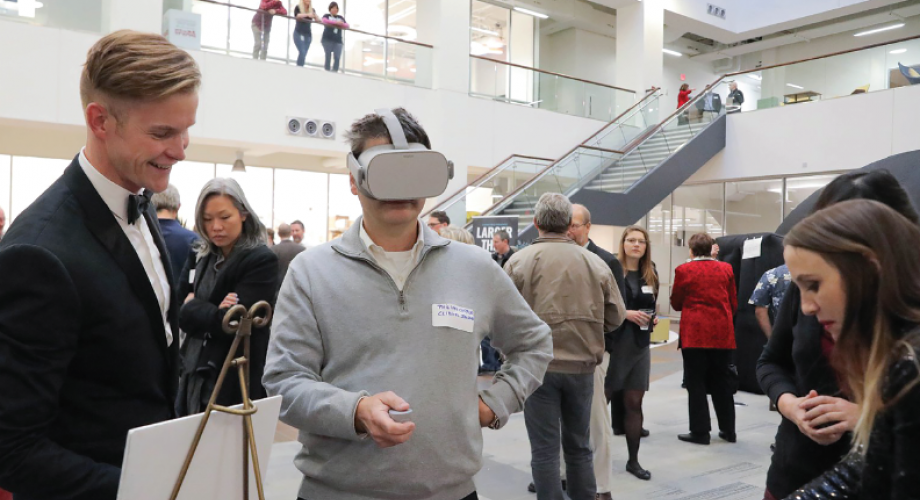Marketing Manager Courtney Patterson from Greystar captured the attention of the 2019 AIM Conference audience when she shared that she recently shifted her marketing strategy from pay-per-click (PPC) advertising to 3-D images for a new community in Durham, N.C.
She created even greater interest when she highlighted that this strategy helped Solis Brightleaf Apartments deliver a 41 percent pre-lease performance by the time it opened its doors in mid-December.
Patterson, who is an experienced marketer in the booming Durham market, had an initial spend of $30,000 for images and video production through a real estate visualization company.
Patterson says Solis Brightleaf’s overall look and design was a key part of its appeal. Developed by Terwilliger Pappas, Patterson credits the developer with delivering a high level of excellence in design in its projects, including being the first community to offer micro-units.
The 194-unit Solis Brightleaf exceeded budget and performance goals as follows:
- It pre-leased 79 apartments before opening in December 2018
- It saved $6,000 in budgeted PPC spend for 2018
- Through early May 2019, it had an $11,000 positive variance to budget in overall marketing spend
- It sits 62 percent occupied as of early May compared to a 48 percent budget goal
- It is $200,000 over budget in overall revenue
- It has spent only $6,000 in concessions, through early May
“The development is very well thought out with an incredible building design,” she says. “The finishes are just amazing.”
With at least one lease-up per year for the past six years in Durham, the concession dollar amount is very good, Patterson says. “You have new properties coming online and it is a very competitive market,” she says.
She credits the strong pre-leasing performance to a series of 3-D virtual walk-through-tours and videos. Her marketing spend produced a total of five 3-D tours – three featuring amenity spaces, a one-bedroom model and a micro-unit. The project was turned around in 45 days and content was loaded to the community website in late June 2018.
The tours include 16 still images, a number that can vary depending on a community’s intentions and budget. It also provides a 2 minute, 7 second, cinematic fly-through 3-D image video tour that is featured on the community’s website as part of its ongoing marketing strategy.
The videos provide a more detailed experience of the amenities and spaces throughout the community beyond construction shots and common renderings.
“Many times, prospective residents have a difficult time visualizing a fully developed community when it is under construction,” Patterson said. “It is hard for them to see past the framework and construction progress prior to the community opening.”
As one web developer, once told her, “Images and video are really the landscaping for any property that is under construction. This is what your prospective residents are going to see first, and that first impression is important.”
Patterson says indeed that the dynamic, engaging, rich content she used in this way was so impactful.
Love Your Glasses
Prospective residents at Solis Brightleaf participated in the tours through virtual reality (VR) glasses. Patterson says there is a learning curve, especially for first-time VR users. Vital to the community’s overall success was the professionalism of Solis Brightleaf’s onsite staff.
“The team is so well-trained on the technology, and their comfortability with the VR tours has been integral to their success” she shared.
“Looking through the VR glasses while viewing the community can be overwhelming for a visitor, but the Brightleaf staff is there to answer any questions while the tour is in progress. The glasses include a remote-control device that the prospective resident can use to help guide them through the tour. The ‘cool’ factor of the VR tour increases prospective resident engagement and creates greater interest in the community.”
Good-Bye to PPC?
PPC was an essential part of the marketing plan.
“With PPC, we budgeted $2,500 to $3,500 per month, and we were scheduled to launch the campaign in September, however, based on the high performance of the 3-D imagery combined with VR tours we found it wasn’t necessary.”
Patterson has used VR in other communities, however, Solis Brightleaf marked her first time using it during a lease-up. This more than likely won’t be her last. She felt that VR is here to stay, and it will continue to gain popularity and will likely come down in price.
“Whenever you have new technology, there will be higher expenses to support the development of the platform,” she said. “But with content driven-marketing strategies becoming more in demand and market growth related to the technology increasing, the overall cost of VR will likely go down.”
Patterson believes that VR-based marketing is not replacing PPC.
“PPC is something you need to consider in your strategy,” she said. “It’s not being phased out. As far as cost, marketers need to be wise. Too many times I’ve heard the solution to PPC underperformance is to just spend more.” Patterson says that successful PPC strategies start with the community and digital marketing vendor both understanding the goals and the limitations of the property.
“Engaging visual content isn’t beneficial if prospects can’t find the community. Digital marketing campaigns should be targeted, fluid and constantly evaluated to succeed.”
